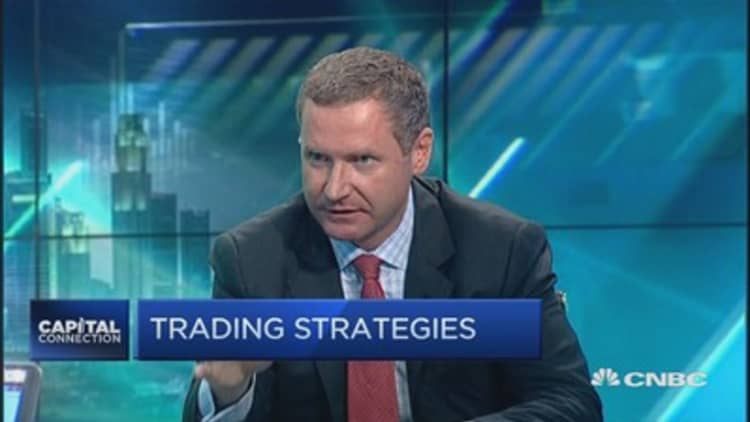Ever since the crisis of 2008–2009, financial advisors and their clients have looked for ways to shield portfolios from potentially devastating portfolio losses. Many set their sights on liquid alternatives funds, an emerging investing category that's sold as both mutual funds and exchange-traded funds.
In 2008, just $44 billion was invested in alternatives through mutual funds and ETFs, according to research firm Morningstar. At the end of 2015, however, assets had exploded to $300 billion, with close to 600 funds.
"When you look at the flows and product development, it really kicked in after the financial crisis," said Josh Charlson, Morningstar's director of research for alternative strategies.
There's good reason for the interest, said Jim Holtzman, a certified financial planner with Legend Financial Advisors. Holtzman has had stakes in managed futures, an alternative strategy that follows trends in asset classes like commodities, metals and interest-rate swaps. When the market faltered in 2008, that portion of his clients' portfolios rose 28 percent, while the stock holdings fell by more than 40 percent.
"We were fortunate," Holtzman said. "That really helped our portfolios."
At the time, Holtzman held the managed futures in limited partnerships because that was the only way he could access them. Since the proliferation of liquid alternative mutual funds and ETFs, he has switched to them.
Once reserved for hedged funds and institutional investors, alternative strategies are now available to ordinary investors under the 40 Act structure, named after the act of Congress that established retail investment funds in 1940. Those funds must adhere to a higher level of transparency and liquidity than hedge funds or limited partnerships.
There's a tendency for advisors to flock to alts after a market decline. But that period after a decline tends to be a relatively calm period, so they get frustrated with the utility factor of alternatives.Marina Grossexecutive vice president with Natixis' Portfolio Research & Consulting Group
Even as their popularity grows, liquid alts are still largely the purview of financial advisors, noted Brandon Thomas, chief investment officer of Envestnet's investment management program for financial advisors. According to a Morningstar and Barron's survey of advisors from 2015, almost 66 percent said they expected to allocate more than 11 percent to alternatives; just 39 percent had said the same in 2013.
Liquid alts is a broad category that includes several strategies, such as managed futures, market neutral, multicurrency, multi-asset and long/short equity.
Most advisors use liquid alts as ballast during falling markets because they invest in nontraditional assets that aren't correlated with stocks or bonds. Thomas recommends that advisors use them "as an all-season allocation."
Predicting when markets are likely to fall and inserting an alternative is too hard. For investors who simply want to hedge risk, Thomas recommends multi-asset funds that provide exposure to the different types of alternatives.
To gain the greatest benefit from the asset classes, investment experts recommend a "meaningful" allocation of 5 percent to 10 percent; otherwise, the impact won't be felt. But some, such as Thomas of Envestnet, believe advisors should consider higher amounts, as much as 25 percent.
"If you only have 5 [percent] to 10 percent, it may look like diversification, but it's not really doing much to mitigate risk," Thomas said. "But if you allocate too much, your overall portfolio tends to get away from market returns."
Duncan Wilkinson, CEO of AlphaSimplex, a lineup of liquid alternative funds, believes that investors nearing retirement have the most to gain from liquid alternatives. They're the most sensitive to risk and need to protect their portfolios against the downside.

And some advisors also use liquid alts as a way to deal with the current low-interest-rate environment. "Bonds are dead money now, and stocks themselves aren't cheap," said Charles Sizemore of Sizemore Capital, a fee-based Registered Investment Advisory firm based in Dallas.
Sizemore prefers long/short strategies that buy stocks that managers expect will rise in value (long), while shorting those they expect will fall.
"We're essentially eliminating bonds and replacing them with something that will serve the same purpose, but also some potential return," he said.
While alternatives might fare better than a mainstream stock/bond portfolio in a downturn, they've got their own drawbacks.
The big one is fees. According to Morningstar, the average expense ratio of alternative funds is 1.7 percent, many times that of either equity or bond funds. "The high fees have eaten into returns, which is a concern when it's generally a lower-return environment," said Charlson of Morningstar.
However, Charlson noted that compared to the fees that such strategies charge in the hedge fund structure, they're a bargain. Investors in hedge funds normally pay 2 and 20 — a 2 percent fee on assets under management, plus 20 percent of profits.
Charlson predicts that fees will come down with greater competition. And if robo-advisors decide to include them in portfolio lineups, that could drive prices down further still. "That will be a fairly significant driver to keeps fees lower," said Envestnet's Thomas.
Because liquid alts are seen as a way to safeguard against market declines, some investors become impatient waiting out a strong bull market. Managed futures funds, for example, have had negative performance for four of the last five years as the stock market rallied.
"There's a tendency for advisors to flock to alts after a market decline," said Marina Gross, executive vice president with Natixis' Portfolio Research & Consulting Group. "But that period after a decline tends to be a relatively calm period, so they get frustrated with the utility factor of alternatives."
Additionally, some advisors, like Jim Wright, chief investment officer at Harvest Financial Partners, are worried that the strategies are still too new, at least in the 40 Act format. Few managers in the category have more than a five-year track record.
"Why should I pay a lot of fees and potentially be a guinea pig to someone who hasn't been doing it for a long time?" he said.
— By Ilana Polyak, special to CNBC.com




